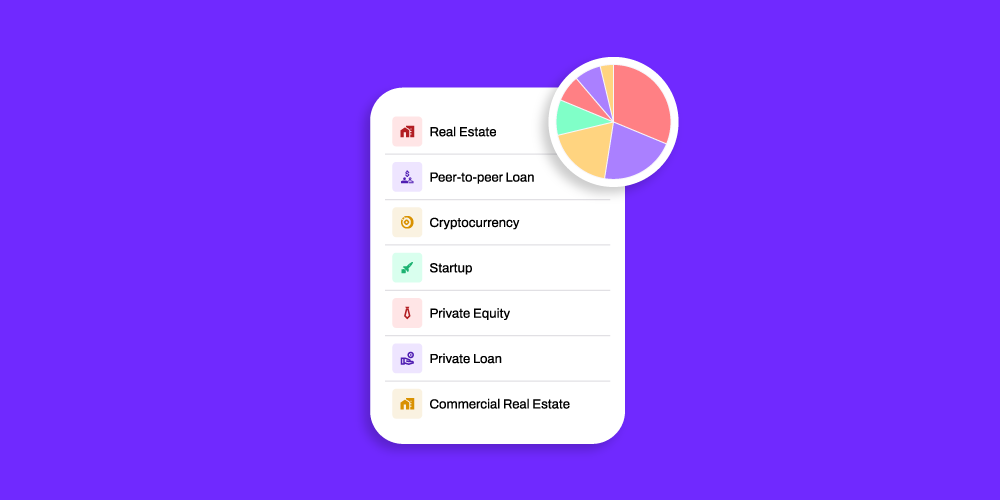How to Maximize Your Retirement Savings with a Self-Directed Solo 401(k)
If you’re self-employed, you understand both the freedom and responsibility that come with running your own business. You may also be eligible to...
3 min read
 Rocket Dollar
:
June 08 2020
Rocket Dollar
:
June 08 2020
Troy Eckard, the brains behind Eckard Land & Acquisition (ELA), is fueled with over three decades of energy expertise, tangible asset investing, and matching capital with opportunities. As an investor himself, he knew there was a gap in the market for a company that would personally work on behalf of their clients to acquire tangible, long-term, and cash-flowing assets. Troy Eckard has raised over $100 million in energy and real estate, worked with investors and teams on the drilling of over 400 wells, and has 35 years of experience in oil and gas.
Private ownership of mineral rights is one of America’s last great frontiers. Although mineral rights have existed for as long as private deeded real estate, only in the previous two decades has simplicity and value grown for individual investors to take advantage of these investments. The US shale boom has opened up opportunities in the mineral market to private investors with minimal risks and a once in a lifetime chance to create wealth with cash flow and growth.
Mineral rights are deeded property assets held by the owner. The United States and a few other countries allow private property owners to own and collect royalties or sell both “surface rights” where real estate is built and "mineral rights" for under the ground. The owner also has the freedom to sell, lease, gift, or bequeath these rights individually or entirely to others who might drill or extract from that land.
The great advantage of mineral rights is they are not subject to any expenses, drilling risk, environmental risks, capital calls, or abandonment exposure when drilling and wells finally reach their economic limits. Directly funding oil and gas drilling and the vast amounts of capital needed to start a project can be at the mercy of market fluctuating oil and natural gas prices.
Mineral owners receive royalty checks monthly from the oil company leasing and operating wells on their land as well as gross sales for every drop of oil and every molecule of gas extracted and sold. Royalty distributions deliver monthly checks to mineral owners and are never subject to any reductions other than production taxes. 15 percent of all royalty income is tax-free due to a depletion allowance.
Mineral ownership is very similar to investing in traditional real estate. It is important to know that mineral ownership requires three elements for success: location, activation, and replication.
Mineral rights are the cornerstone of all US oil and gas production. Mineral owners technically own 100% of all the oil and gas in the United States. The leasing of mineral rights to major energy companies allows private investors to participate in the economic engine of harvesting the country’s oil and gas.
In the last two decades, mineral rights have changed dramatically. Mineral acquisitions have moved from being considered speculative and high-risk investment products to more of a predictable, lower risk, and a measurable asset to acquire. The US shale and fracking boom, non-conventional reservoir discovery, and state of the art exploration have opened tens of millions of valuable mineral rights for individual investors to acquire. An investor can use their knowledge of equities to recognize value and opportunity in the time of energy market upheaval and watch for opportunities revealed by movements of energy mega-corps.
Technology has advanced the success rate of exploration to over 95% coupled with enormous reservoirs being proven and extractable for future profits. All these technological and operational improvements have changed mineral ownership from one of the lowest investor engagement assets to a new era of potential returns. This new frontier is now wide open for private investors to seek out, learn, and deploy capital if it matches their investment strategy.
Mineral investments are not as nebulous as many assume it must be. It merely requires education, analysis, and guidance from an expert in the industry. Mineral investments can be like selecting stocks in the stock market. There is always a buyer and a seller where each is trying to maximize their economic outcome and base this upon market conditions and timing. Energy giant’s actions can often inform where future buying opportunities can arise. There are more minerals than capital, and probably 80% of minerals offered that do not warrant an investor acquiring or investing.
The key driver is knowing what to buy, why you are purchasing the minerals you selected, and the entry and exit plan for maximizing your returns while preserving your value.
The key to mineral ownership and investing is that you never have any further final costs and zero holding costs past your invested capital. The right minerals acquired can provide decades of cash flow and a lift in asset values based upon reserves discovered and economically extractable. Minerals obtained with under-producing wells in shale reservoirs offer an extremely high probability of commercial wells and cash flow via royalty distributions.
Minerals are now perceived as a core asset that can be considered for a portfolio for qualified investors seeking a right to proven oil and gas reserves. Investors can and should enjoy a regular and long-term cash flow for years to come.

If you’re self-employed, you understand both the freedom and responsibility that come with running your own business. You may also be eligible to...

In today’s investing landscape, many individuals are asking the question: What are the benefits of investing in alternative assets? As traditional...

Alternative asset investment is no longer reserved for hedge funds and institutional players. Thanks to platforms like Rocket Dollar, everyday...

Portfolio diversification is crucial to withstanding bear markets. Rocket Dollar investors who want to diversify their tax-deferred investment assets...

As the investing landscape continues to evolve, staying ahead of the curve is crucial for taking advantage of new opportunities and securing your...

Wine and Spirits can be an investable asset class in your retirement account, but not as physical assets. As a securitized, intangible asset, much...